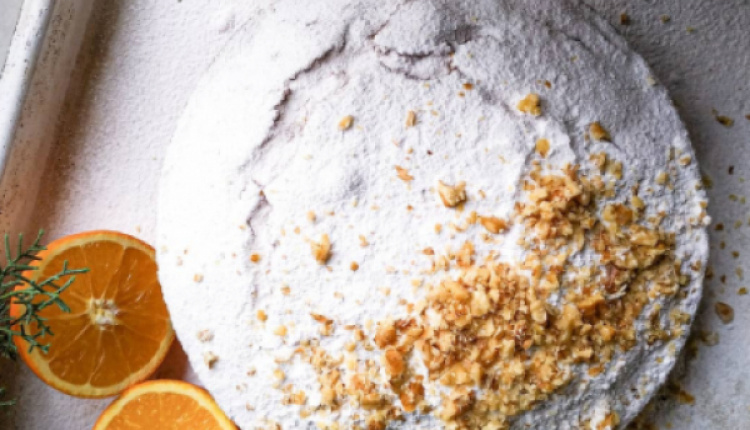Vasilopita - Lucky New Year's Cake
- by XpatAthens
- Wednesday, 28 December 2022

Vasilopita is a traditional Greek cake or bread served on New Year's to celebrate the life of Saint Basil. After baking the cake, a coin is inserted though the base and when cut, the person who finds the coin is said to be granted luck for the rest of the year.
Vasilopita is made of a variety of doughs, depending on the region of Greece and almost every family has its own recipe. The most popular vasilopita recipes are made either with tsoureki dough or like a cake. Here, My Greek Dish shares with us their family's recipe which has been enjoyed for over 30 years.
Vasilopita is made of a variety of doughs, depending on the region of Greece and almost every family has its own recipe. The most popular vasilopita recipes are made either with tsoureki dough or like a cake. Here, My Greek Dish shares with us their family's recipe which has been enjoyed for over 30 years.
Ingredients
For the Vasilopita:
- 375g butter (13 ounces)
- 3 cups sugar
- 6 eggs (divided into yolks and whites)
- zest of 2 oranges
- 1/2 cup orange juice
- 200g strained yoghurt (7 ounces)
- 1tsp vanilla extract
- 750g self-raising flour, sifted (26.5 ounces)
For the glaze:
- 2 cups icing sugar
- 2 tbsps hot water (or milk)
- 1/2 tsp vanilla extract
To find out important tips on how to prepare the Vasilopita, please visit: My Greek Dish
History Behind The Tradition
The Vasilopita is made in honor of St. Basil (Agios Vasilios) and a heavy tax burden. It is said that one year, during a time of famine, the emperor levied an excessive tax on the people of Caesarea. The tax was such a heavy burden on the already poverty-stricken people that to avoid debtors’ prison, each family had to give up its few remaining coins and pieces of jewelry, including precious family heirlooms.
Learning of this injustice, St. Basil, who was the archbishop of Caesarea, took up his bishop’s staff and the book of the Gospels and came to his people’s defense by calling the emperor to repentance. The emperor listened! He canceled the tax and instructed his tax collectors to turn over to St. Basil all of the chests containing the coins and jewelry which had been paid as taxes by the people of Caesarea.
St. Basil was then faced with the daunting and impossible task of returning the thousands of coins and pieces of jewelry to their rightful owners. After praying for a long time, St. Basil had the idea to bake the treasures into one huge pita (bread). He then called all the townspeople to prayer at the cathedral. After the church service, he blessed and cut the pita, giving a piece to each person.
The people all joyfully returned home, giving thanks to the bishop St. Basil the Great! In remembrance of this act, Orthodox Christians observe the tradition of the Vasilopita each year on January 1st.
Main image: @polikalablog
History Behind The Tradition
The Vasilopita is made in honor of St. Basil (Agios Vasilios) and a heavy tax burden. It is said that one year, during a time of famine, the emperor levied an excessive tax on the people of Caesarea. The tax was such a heavy burden on the already poverty-stricken people that to avoid debtors’ prison, each family had to give up its few remaining coins and pieces of jewelry, including precious family heirlooms.
Learning of this injustice, St. Basil, who was the archbishop of Caesarea, took up his bishop’s staff and the book of the Gospels and came to his people’s defense by calling the emperor to repentance. The emperor listened! He canceled the tax and instructed his tax collectors to turn over to St. Basil all of the chests containing the coins and jewelry which had been paid as taxes by the people of Caesarea.
St. Basil was then faced with the daunting and impossible task of returning the thousands of coins and pieces of jewelry to their rightful owners. After praying for a long time, St. Basil had the idea to bake the treasures into one huge pita (bread). He then called all the townspeople to prayer at the cathedral. After the church service, he blessed and cut the pita, giving a piece to each person.
The people all joyfully returned home, giving thanks to the bishop St. Basil the Great! In remembrance of this act, Orthodox Christians observe the tradition of the Vasilopita each year on January 1st.
Main image: @polikalablog


